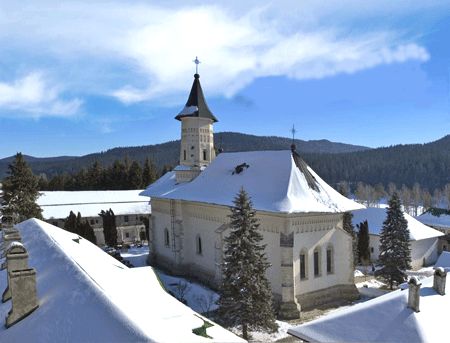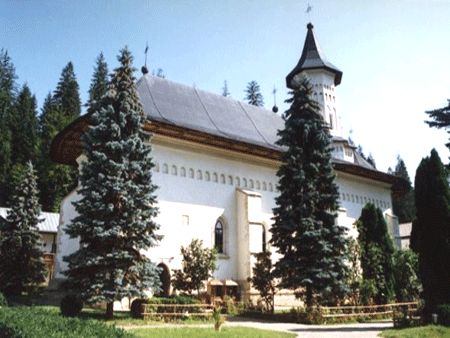The Slatina Monastery in Romania is the first ever place of worship which was built by Alexandru Lapusneanu, the works being completed in 1558, when this turned out to be one of the most beautiful convents in the region. Great care had been taken for everything to be exactly as it should have, in 1558 or 1561 (the sources differ) the place was finally blessed and ready to be a center of holy prayer and devotion. Nowadays the monastery is still used, but it is also worthy of a visit due to the beauty of the architecture and decorations.
With a strange, irregular form, the stone monastery is surrounded and protected by thick and sturdy walls, dating from the founding of the place, it is surely that the complex was projected not only as a Christian place of worship, but also as a fortress, if necessity should arise. Some of the fortifications, such as the entrance, were later rebuilt and restored in the 19th century, others have kept very well. The general architectural style is a mix of Gohic, Renaissance and traditional elements, with a strange and surprisingly appropriate order, which makes it even more interesting to the visitors.

Of major importance - like in most other monasteries - are the paintings inside and outside the church, restored with great care and talent to be exactly like they were hundreds of years ago. Touching and beautiful due to their religious style, with a certain touch of art naïve, depicting various scenes form the Gospels of the Church's traditions. You can also discover the image of Alexandru Lapusneanu and his family, a fitting compositions, for the ruler was not only the founder and protector of the place, but also chose the Slatina Monastery as his final resting place. Visitors can see the tombs of the Lapusneanu family, very well preserved, four of them in all. There is also another landmark reminding visitors of the personality of Lapusneanu : Prince Alexandru's Lapusneanu's residence. This is another building, very old, although not very large, which can be found in the courtyard of the monastery, and is surprisingly strong and well kept.
But over the length of it's existence the Slatin Monastery was anything but spared from dramatic moments, and often it's very existence was very much in the balance, despite the care and devotion of the nuns here. And thus most of it's former beauty, decorations and purity were lost and tainted, only much later being restored. According to historians, from the end of the 17th century and until the end of the next, frequent wars and plunders filled the region, and in the end, mainly from fear, the monastery was abandoned and left deserted. And remained that way for nearly half a century, until the first years of the 19th century, when finally the nuns returned, the renovations began and the monastery came back to life.

It was in 1821 that the monastery was shortly used as a refuge by revolutionary leaders, thus being besieged and partly destroyed. In 1823 the ample and costly restoration began, much of the roofts were also redone, while some older structure were modified. Further extensions and changed were made in 1834, in a Neo-Classical manner, very much in fashion at that time, even on religious grounds. It would take some time for everything to be completed and the Slatina Monastery be finished once again, but at the end of the 19th century it was finished. And the prayers and monastery life began once again.
Nowadays, it is a simple and very beautiful place, worthy of spending some time here to pray or to simply admire the architecture and decorations.
Photo : crestinortodox.ro
October 2008

































